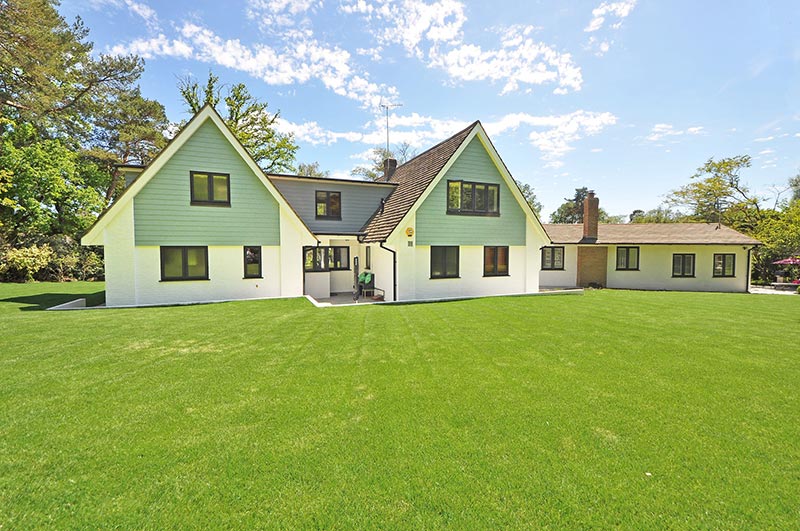
A great lawn adds instant curb appeal to a home’s first impression, but according to Reviewed.com, homeowners may be making one of these common mistakes in their lawn maintenance:
Cutting the grass too short
Most grasses should be cut no shorter than 2.5 inches, according to Reviewed.com. Anything shorter could impede the grasses’ ability to absorb enough sunlight to thrive.
Failing to water enough
Reviewed.com says that most grasses need 1 to 1.5 inches of water per week. “If you’re just turning on your sprinkler for 10 minutes a day, the water isn’t getting down to the grass’s deep roots, and a lot of that water is going to evaporate before the grass has a chance to absorb it,” the article notes. The grass needs about 30 minutes for most irrigation systems. Reviewed.com suggests a test: Place cans across the lawn and run the sprinkler for 30 minutes. Measure with a ruler the amount of water that collects in the cans. Adjust your timing, as needed, to get 1 inch per watering session. Another test: If you can see your footprints in the grass after you walk on it, that is a sign it’s time to water.
Watering at the wrong time of day
To minimize evaporation loss, water early in the morning before it gets too hot. Avoid watering at night, as cool water sitting on the grass overnight can increase disease, Reviewed.com notes. “Don’t rush out to water the grass the moment the sun comes out either,” the article notes. “Grass grows deeper roots when it gets slightly drought-stressed.”
Using too much fertilizer
If your grass turns brown, don’t just dump a bag of fertilizer on it. That can waste money and hurt your plants. You likely will need less fertilizer than you think. Follow the directions on the bag for how much to fertilize. Also, avoid applying powdered or granular fertilizer before a rain. It will run off with rainwater. Reviewed.com also notes that if you use compost, try three-fourths of a cubic yard per 1,000 square feet of lawn.
Applying fertilizer at the wrong time
Fertilizer will be the most beneficial for a yard in the spring and fall in most climates. “Fertilizer will help your lawn the most when it’s growing the most—that is, not in the middle of summer, when your grass gets stressed by heat and drought,” the article notes.


